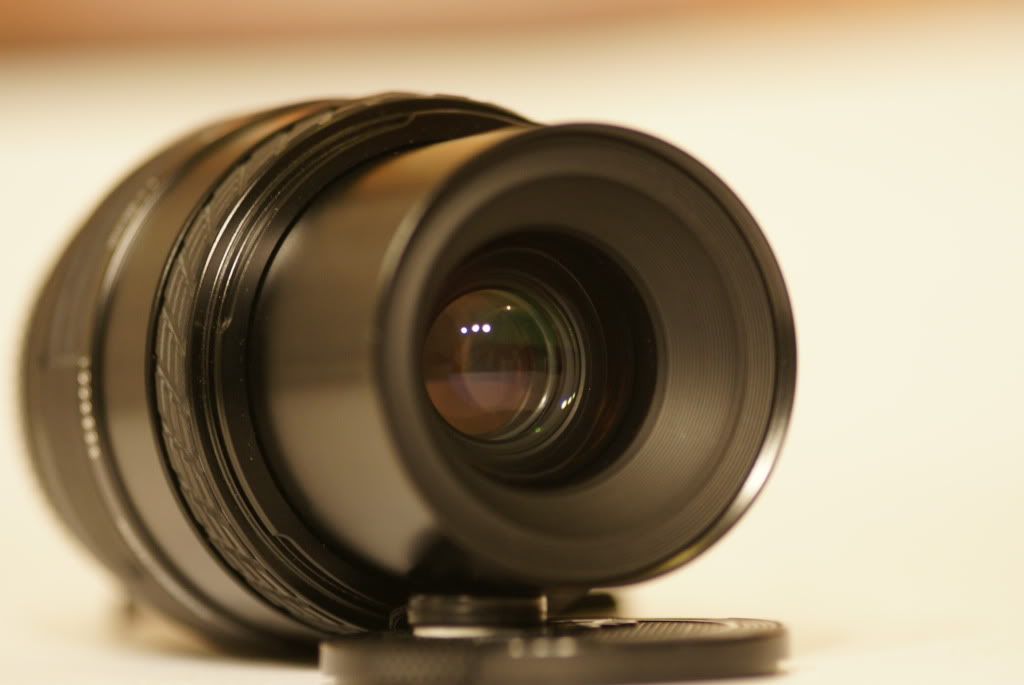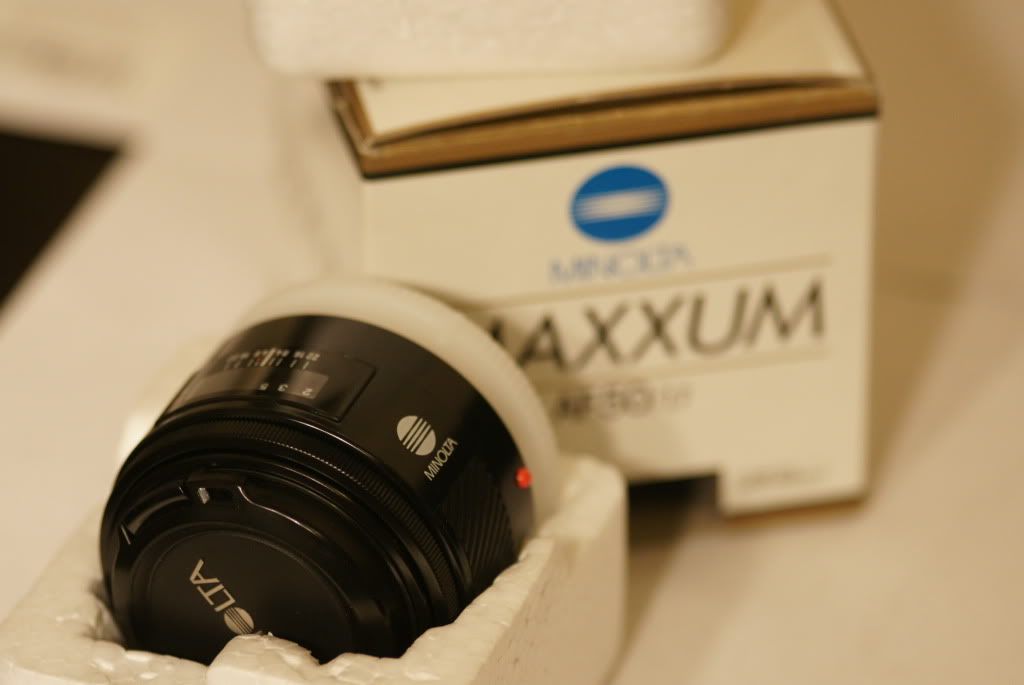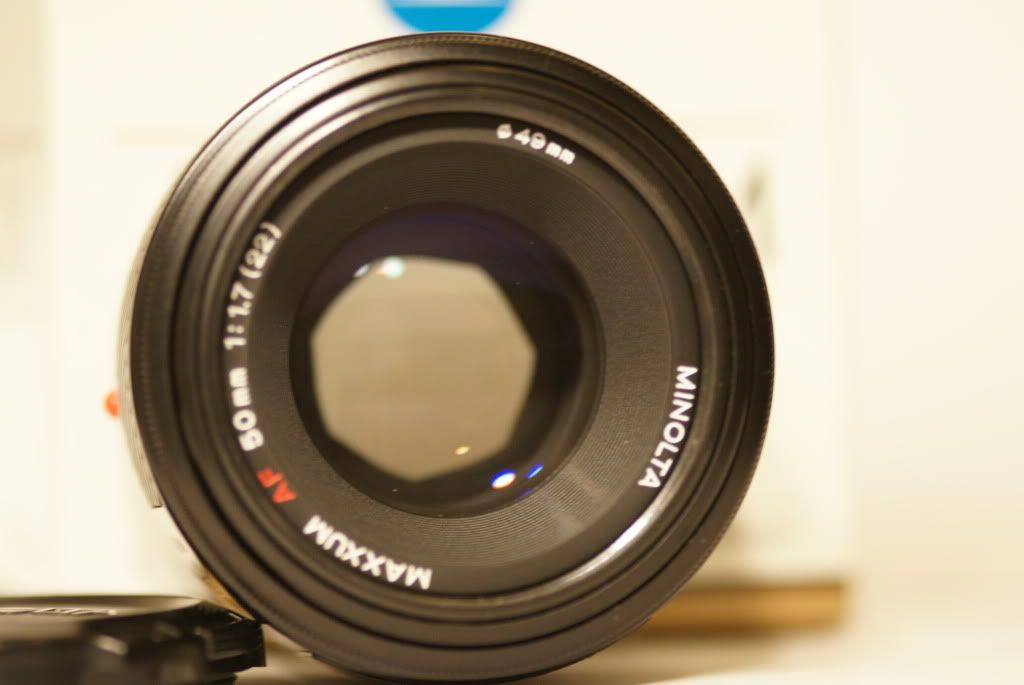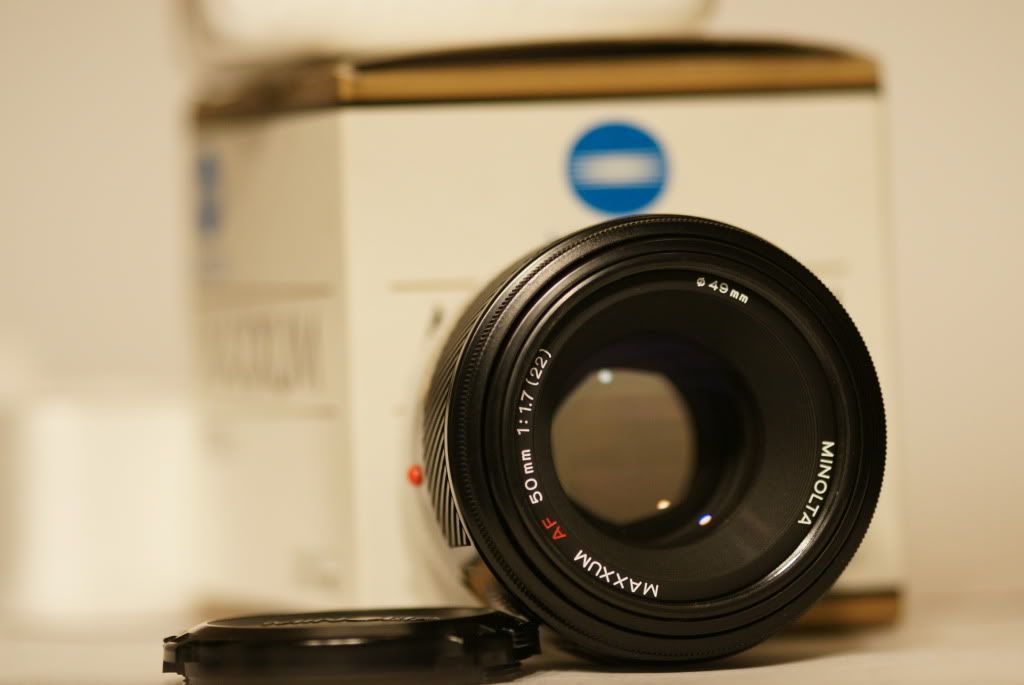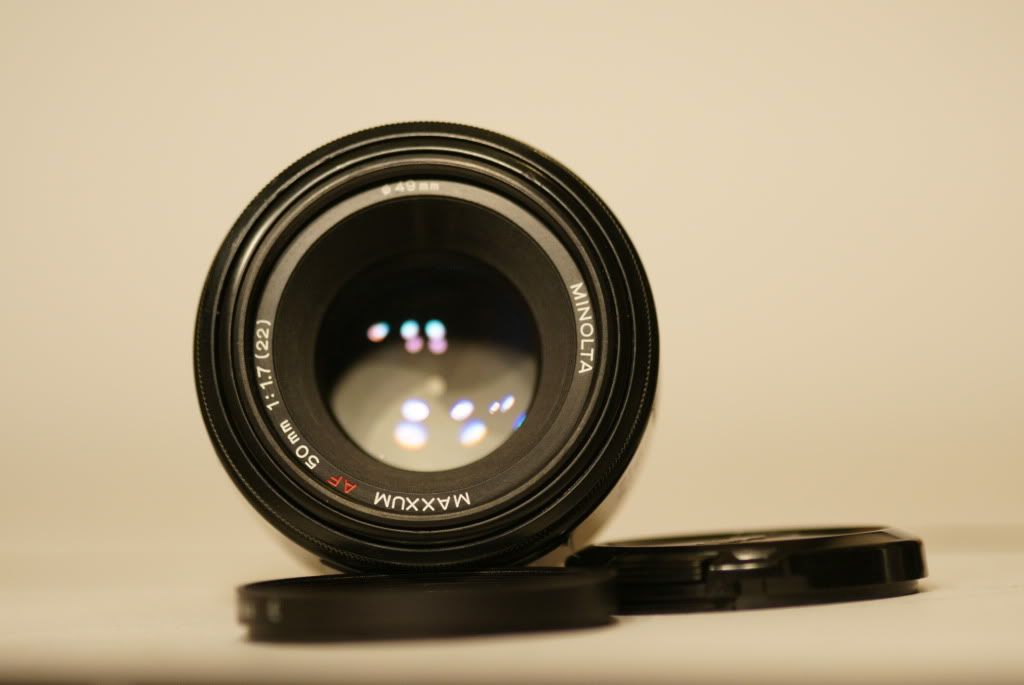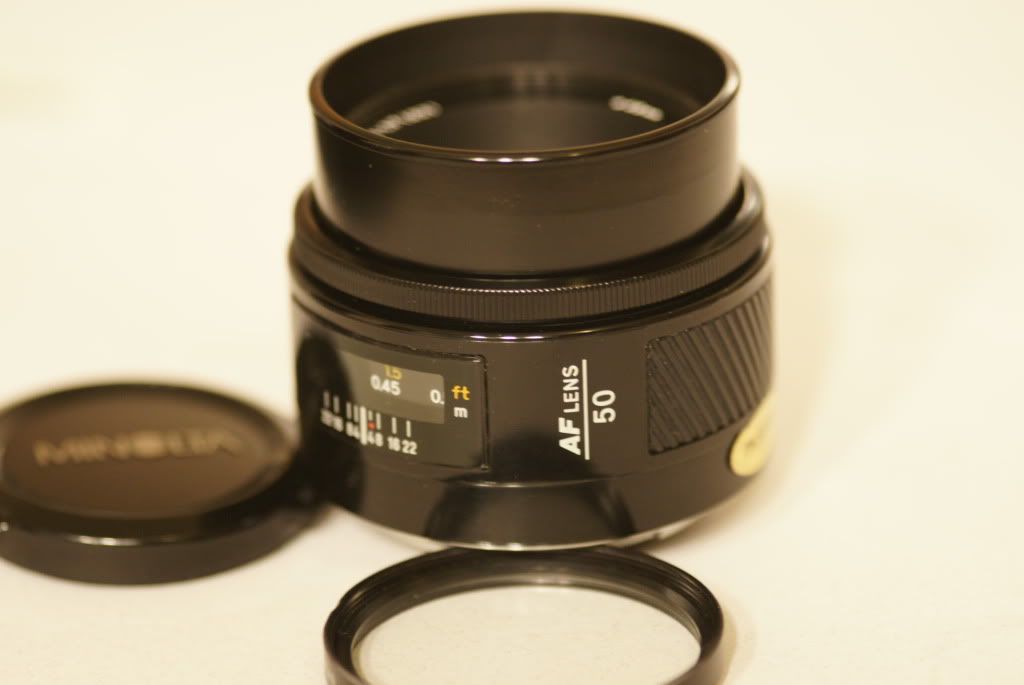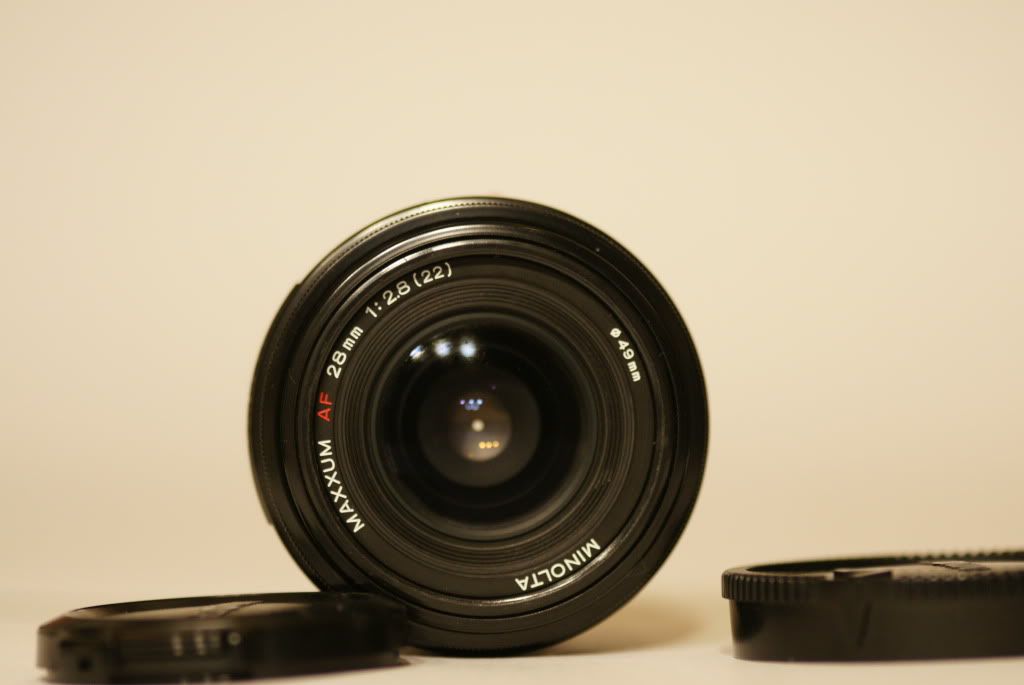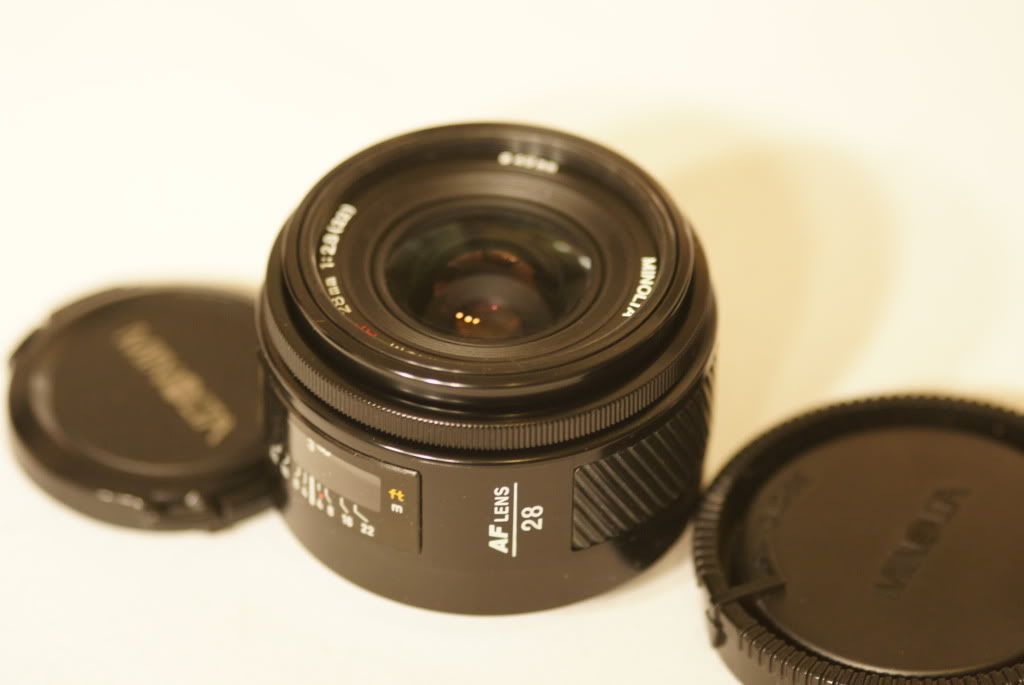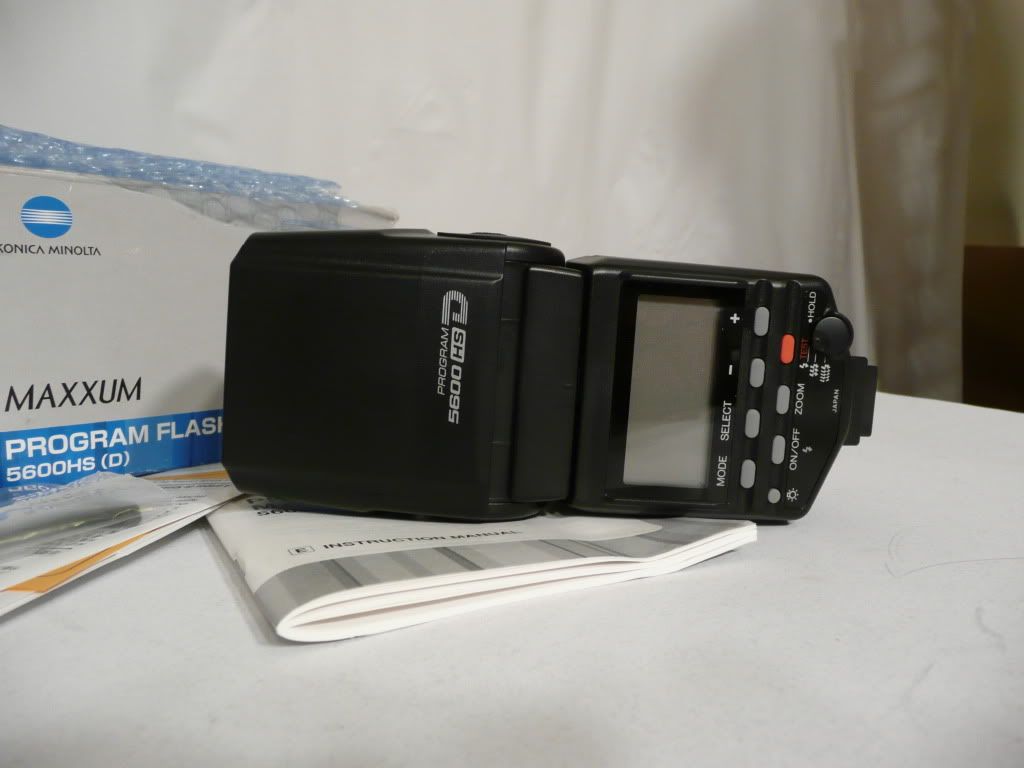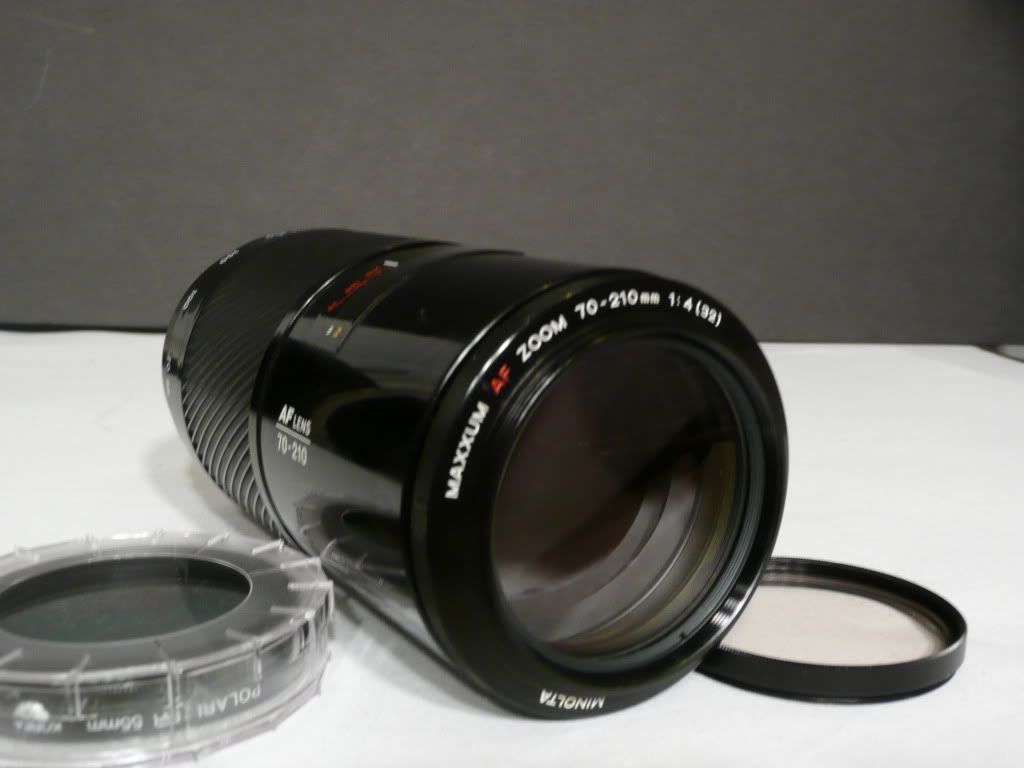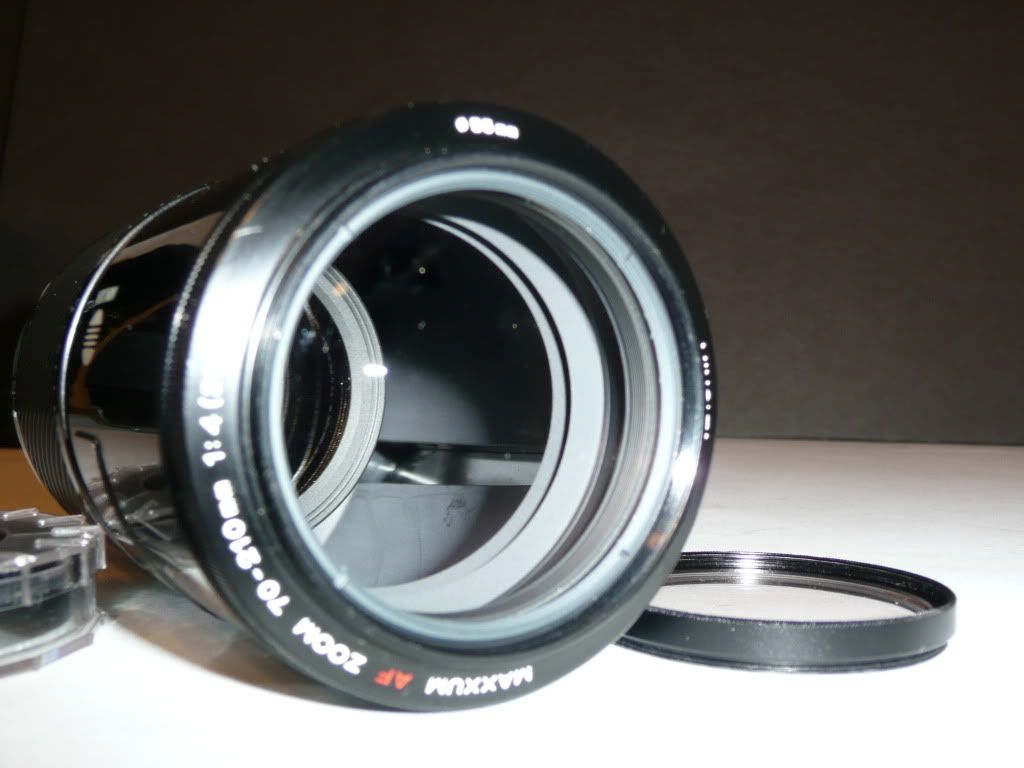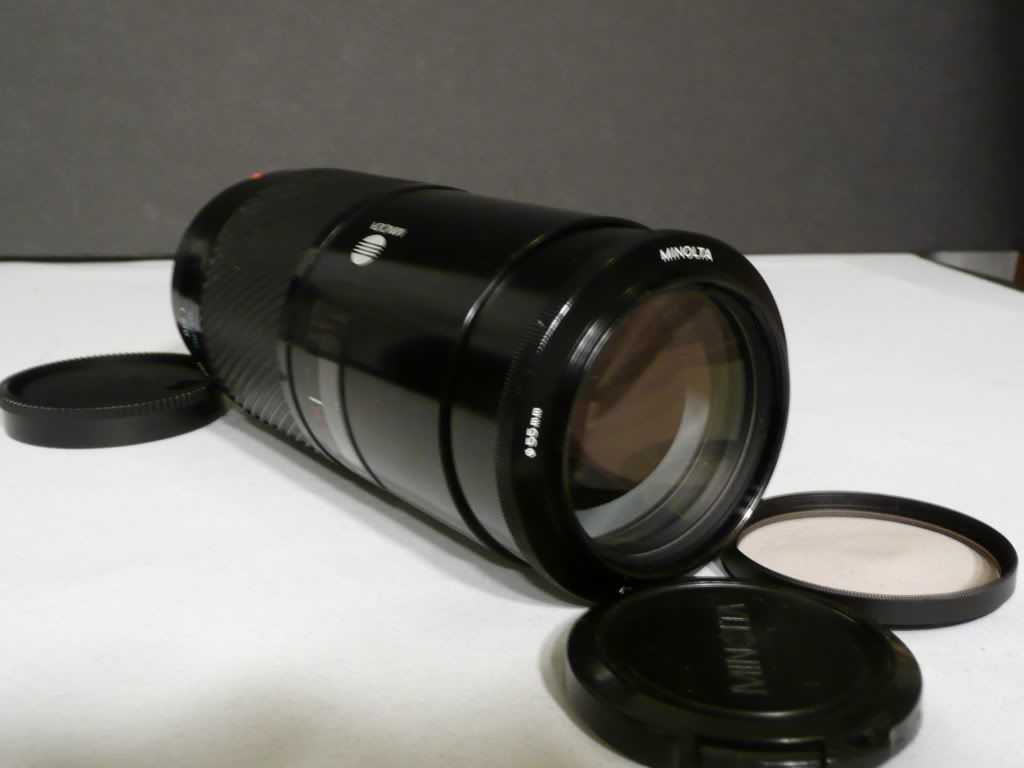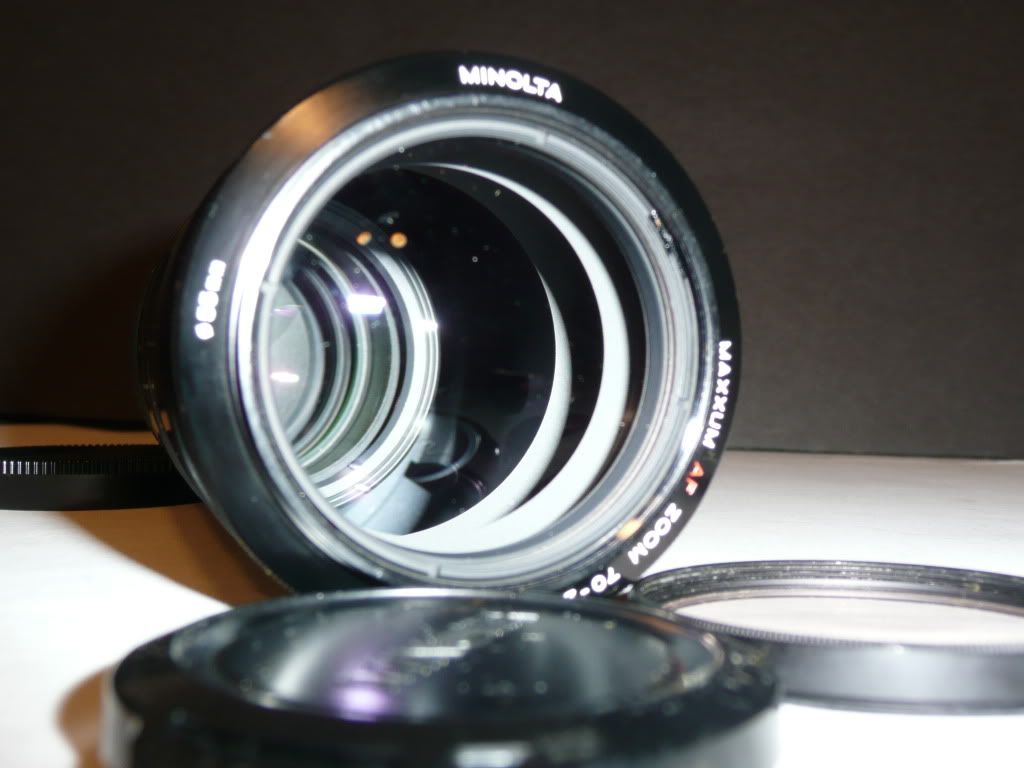The amazing community of minolta users group compiled this.
Basic information about Minolta Maxxum lenses
The Maxxum AF mount lens was created in 1985 with the advent of the Maxxum 7000. It is slightly larger than the previous Minolta MD mount (which is a manual focus). There do exist converters that will allow MC or MD mount lenses to be mounted on a Maxxum, but they all act as teleconverters as well due to the difference in diameters. All Maxxum compatible lenses are autofocus lenses which can also be manually focused (with the slight exception of the xi series lenses). They also are automatically stopped down to the appropriate aperture, and in all cases, the actual aperture range is continuous, not specific settings such as 8, 5.6, or 4 (in other words, the actual aperture set by the camera may be 4.23 instead of 4 or 4.5).
What series Maxxum lenses are there?
There are three types of Maxxum series lenses. The classic, the i series, and the xi series. A special lens called the power zoom is also available, but can be lumped into the xi series for sake of argument. The classic series was replaced with the i series, and the i series is what all Maxxum lenses are today. Minolta also makes a "high performance" line of lenses called the G series.
What is the classic series?
The classic series are lenses which were produced early on in the Maxxum line. These include the 35-70/f4, the 135/f2.8, and the 200/f4. There is nothing wrong with these lenses and they will work with non-classic lines of Maxxum cameras (ie, they will work with i, xi, and si series cameras), but the computer chips that are inside lack some of the information that the newer cameras can make use of. For all intents and purposes, there is no difference other than age between the classic line and the i series.
What is the i series?
The i series was introduced to match the i series camera. The i series lenses use faster and lighter mechanisms, and have more contacts than the classic series, allowing the newer cameras to get more information from the lens. All Maxxum compatible lenses produced today are i-series compatible.
What is the xi series?
The xi series is from the "Solutions to Problems Which Don't Exist Yet" department at Minolta. They are powered zoom lenses that use a motor to both zoom and focus. Since the zooming can be controlled by the camera, this lets xi cameras and lenses do interesting things together. Most people shy away from xi lenses because of the extra battery drain, and some say that the optical quality suffers on some of them, but this is all opinion.
Since xi series lenses use a motor to control zooming and focusing, on a pre-xi series camera (the i or x000 series) these functions do not always function. Specifically, the zoom capability is lost, and you must use the AF system (since the manual focus is also power assisted).
What is the power zoom lens?
The power zoom lens is a 35-80/f4-4.5 macro lens that uses a motor in the camera, not a motor in the lens (such as the xi series) to move the lens elements. It was Minolta's last attempt at creating a useable xi type lens, but the public still didn't want it. It suffers from the same lack of functionality on the older cameras as the xi-series lenses.
What is the G series?
The G series is a set of high quality, professional lenses from Minolta that sport large apertures and large filter sizes. These are also listed in Appendix C.
Interesting facts: Minolta still make their own optical glass. After casting, the front element of the 600mm f4 APO-G is allowed to cool for 2 weeks before being worked. [CPV]
Who else makes Maxxum compatible lenses?
Lots of people. The main third party vendors of any great success and reputation are Sigma, Tamron, and Tokina. Other vendors include Vivitar, Samyang, and Kalimar. In the world of photographic lenses, all other things being equal, what you pay for is what you get.
Tell me more about Sigma
Sigma makes their lenses in Japan for distribution in the USA, Germany, and Japan. If you didn't buy your Sigma lens in one of those three countries, then it came through one of them. Sigma lenses are generally good quality, cheap, affordable lenses. They also fill in some of the holes in the original Maxxum line (such as the 400mm/f5.6 APO and the 21-35mm/f3.5-4.2). Some people complain that Sigma lenses feel cheap or that the front elements sometimes come off. This is not a judgement on this author's part, just a report. Other people have no problems, even with the same lens. As always, try to get it in hand before purchasing it, and do what you would normally do with it to see how it all works. Sigma's recent EX series are of significantly better construction and are receiving excellent reviews in the photographic press.
Shortly after the introduction of the Dynax 7, it was found that certain Sigma lenses did not operate correctly with that body. Sigma offered to rechip those lenses at no cost to the owner.
Tell me more about Tamron
Tamron actually makes a lot of optics that people like Minolta and Canon slap their own labels and electronics on top of. Their Maxxum line of lenses is quite good, usually ranked in the top of the third party lenses for Maxxums. They are also slightly more expensive.
Tell me more about Tokina
Tokina makes a rather small selection of Maxxum lenses, but they are also all good quality. A common debate is whether to get the Sigma 400mm/f5.6 APO or the Tokina version. Most people agree that the Tokina is better, the Sigma cheaper, and let your heart decide.
What about the others?
Almost all other vendors make their lenses in Korea or China. Not that there's anything wrong with that. Just FYI. Vivitar is starting to make more Maxxum compatible lenses that are starting to rival the big three (Sigma, Tamron, and Tokina), but the Samyang and Kalimar lenses of the world you should probably avoid. They're easy to afford, since they are typically cheap.
What are teleconverters (or doublers)?
Teleconverter, doubler, extender and TC are all terms for the same thing (although a doubler is technically a specific TC). A TC is an attachment that fits between the camera body and the lens. TCs are given multipliers such as 1.4x or 2x (being the most common); 1.5x, 1.7x and even 3x also exist. This multiplier is then applied to the focal length of the lens that is connected to it. TCs are cheap ways of getting longer focal length (ie: more telephoto) lenses, but at the cost of less light entering the barrel of the lens. A 200mm f4 lens with a 2x TC becomes a 400mm f8 lens (you loose two stops). This may be cheaper than a 400mm f5.6, but it will not be as optically good. By comparison, a 400mm f5.6 lens with a 1.4x TC becomes a 560mm f8 lens (you loose one stop). Again, this is by far cheaper than a 500mm f6.7 (for instance), but the optical quality will suffer. Another advantage is that TCs do not change the minimum focus distance of the original lens and therefore are another way of increasing magnification for close-up photography.
What about matched teleconverters?
Matched teleconverters are designed for a specific lens or group of lenses. Minolta makes a 1.4x and 2x APO teleconverters that are designed purely for their high end G-series telephoto lenses (specifically only the 200/2.8, 300/4, 300/2.8, 400/4.5 and 600/4). Matched TCs are typically a good way to increase focal length, but they can be as expensive as a new lens (the 2x TC for instance goes for $400 list from Minolta as of this writing).
There are two versions of the AF APO teleconverters. The Mk.I versions have no internal gearing on the AF drive shaft; the Mk.IIs introduced gearing to increase AF accuracy, but this has the disadvantages of slower AF and more resistant MF.
Lens specifications,terms and acronyms
A number of uncommon terms and acronyms are often quoted in the specifications of Minolta lenses. Incidentally, Minolta are still one of only a handful of lens makers producing their optical glass in-house.
What does APO mean?
APO is short for apochromatic. This is a series of coatings and special lens material that manufacturers use to ensure that all waveforms of light are focused at the same point. Since different colors of light normally focus at slightly different spots on the film plane (called chromatic abboration), APO lenses typically result in sharper images than non-APO lenses. APO lenses are also more costly.
What does AD mean?
AD stands for Anomalous Dispersion - the kind of glass usually used in APOchromatic lens elements.
What does aspheric mean?
Normally, the surface of a lens element forms part of a sphere and their point of focus varies according to where on its radius the beams of transmitted light pass through it. This can result in blurred images and can be corrected to at least some extent by the use of aspheric lenses, whose surface is not spherical. The use of such elements reduce flare and ghosting and improve detail, but they are much more expensive to grind. Recent developments include the creation of these elements using a combination of an optical resin (plastic to you and me) element bonded to a conventional optical glass element - often called compound aspherics. Aspheric elements are often used in wide angle zooms.
What is a circular aperture?
Some of Minolta's AF lenses use a large number of curved-edge blades (9) in their iris in order to produce a circular aperture, which in turn improves the blurring of intentionally out-of-focus parts of an image. This practice is becoming more common in both wide angle and long-focus lenses.
What is a floating element?
Focus is achieved by varying the distance between a number of elements in the lens and the film plane. A floating element is sometimes used to vary the distance between these focus group elements to improve accurate focusing over the entire focus range of a lens. The 85/1.4 G lens is one example of such a lens; it has a floating rear element.
What is internal focussing?
In normal lenses, the overall length of the lens changes as you focus. An internal focussing design has all elements of the focus group behind the front element. The advantages include: little or no change in the lens' centre of gravity, reduced close-focus distance, and the lack of rotation of the front element while focussing (useful when using some effects or polarising filters). All Minolta's white fixed-focal-length APO-G telephotos have internal focussing.
What is multicoating?
The surfaces of lenses (and filters) are often coated with a transparent substance to reduce reflections (and hence increase light transmission). If multiple coatings are used, the lens can be described as multicoated. Nearly all current production lenses have multicoated front elements and often internal elem



